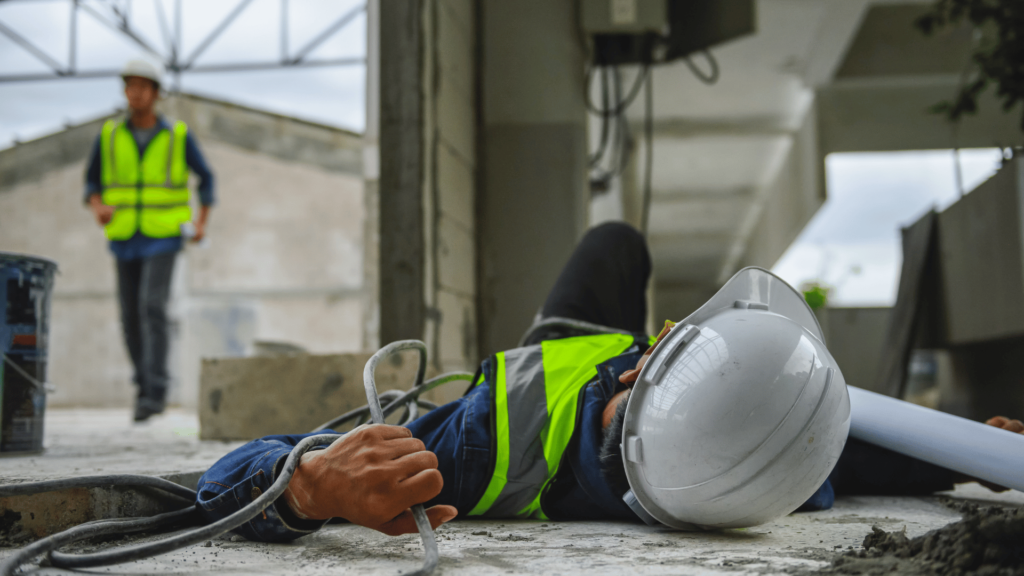Your instincts could get you zapped, too
Picture this: you see a coworker freeze, their body tense, eyes wide, and you realize in horror, they’re being shocked. Your gut screams, “Grab them! Pull them away!” But here’s the problem: if you act on that instinct, you’ll join them in the emergency, and suddenly there are two victims instead of one.
Electrical injuries are sneaky. They happen fast, they’re often silent, and they’re always dangerous. The real challenge is resisting the urge to act impulsively and instead knowing the steps that save lives safely.
So let’s talk through what to do when electricity enters the picture. Because if you know the playbook before it happens, you’ll respond smart instead of shocked.
Don’t touch them
It feels unnatural to just stand back while someone is in trouble, but when it comes to electricity, distance is your first defense. Assume the current is still live until proven otherwise.
Your priority is to cut the power source. Use the circuit breaker, unplug the device, or shut down the main switch if you know where it is and it’s safe to reach. Never, ever grab the person directly.
If you cannot turn off the power, look for something non-conductive, a wooden broom handle, a dry plastic chair, and use it to separate the person from the source without touching them yourself. Keep your own feet dry and avoid metal surfaces.
Remember: you’re not being cruel by waiting, you’re being smart. The first rescuer’s job is to stay safe, so they can actually help.
Call emergency services immediately
Once the source of electricity is controlled, the next step is bringing in the professionals. Electrical injuries are not DIY territory. Call emergency services immediately.
When you call, be specific. Say it was an electrical incident. Emergency responders will arrive with the right gear and the right expectations. Provide:
- The exact location (floor, building, or site area).
- The fact that it’s an electrical injury.
- The time it happened and what actions you’ve taken so far.
If multiple people are on the scene, assign one person to call and stay on the line. This eliminates the all-too-common mistake where everyone assumes “someone else already called.”
Check for breathing, burns, and heartbeat
Once you’ve confirmed the power is off and the area is safe, approach the person.
First, check responsiveness. Are they conscious? Breathing? If they’re not breathing normally, begin hands-only CPR: place your hands in the center of the chest, press hard and fast at about 100–120 compressions per minute, and continue until help arrives or they start breathing again.
Electrical injuries can also stop the heart suddenly. If an AED (Automated External Defibrillator) is nearby, use it. These devices are designed for anyone to operate, with voice prompts guiding you step by step.
Next, check for visible injuries. Electrical burns often have entry and exit wounds, small marks that indicate where the current entered and left the body. Treat these like severe burns: cover with a clean cloth, do not apply ointments, and do not pop blisters.
Finally, watch for shock. Symptoms include clammy skin, rapid breathing, or confusion. Keep the person lying down, elevate their legs if safe, and cover them with a jacket or blanket until responders arrive.
Electricity doesn’t always leave a warning sign
Here’s the tricky thing about electrical injuries: they don’t always announce themselves with visible burns or dramatic symptoms. Even a “minor” shock can cause hidden internal injuries, irregular heart rhythms, or muscle damage.
That’s why medical evaluation is non-negotiable. Even if someone insists they “feel fine,” insist they get checked. Internal injuries may not show up immediately, and waiting could turn manageable damage into a serious complication.
And yes, reporting matters. Logging the incident is not about blame; it’s about prevention. Electrical accidents often reveal hidden hazards like faulty wiring, outdated equipment, or missing lockout/tagout procedures. Without reporting, those hazards remain waiting for the next unlucky person.
Why preparation beats panic
In the middle of an electrical emergency, hesitation wastes time, and rushing in recklessly creates more victims. The sweet spot is preparation: knowing the steps so clearly that when adrenaline kicks in, your actions are automatic.
According to OSHA, electrocution is consistently one of the leading causes of workplace fatalities. The majority of these incidents are preventable with proper training, hazard awareness, and quick, safe response.
Preparation is what transforms chaos into action. It’s the difference between “I froze” and “I knew exactly what to do.”
Safety First, Sparks Last
Electricity doesn’t give second chances, which is why preparation matters more than instinct. Our Working with Electricity: Basic Electrical Safety course builds the habits that keep you calm, careful, and effective when it counts. Because the best rescue is the one that doesn’t create a second victim.
Have courage with caution
Witnessing someone get shocked is terrifying. But courage without caution helps no one. The formula is simple:
- Do not touch them until the power is off.
- Call emergency services immediately, with clear details.
- Check for breathing, burns, and heart rhythm once safe.
- Always seek medical evaluation and report the incident.
Electricity doesn’t forgive mistakes, but it does reward preparation. Train now, so if lightning ever strikes in your workplace, literally or figuratively, you’ll respond with calm, confident action.
References



